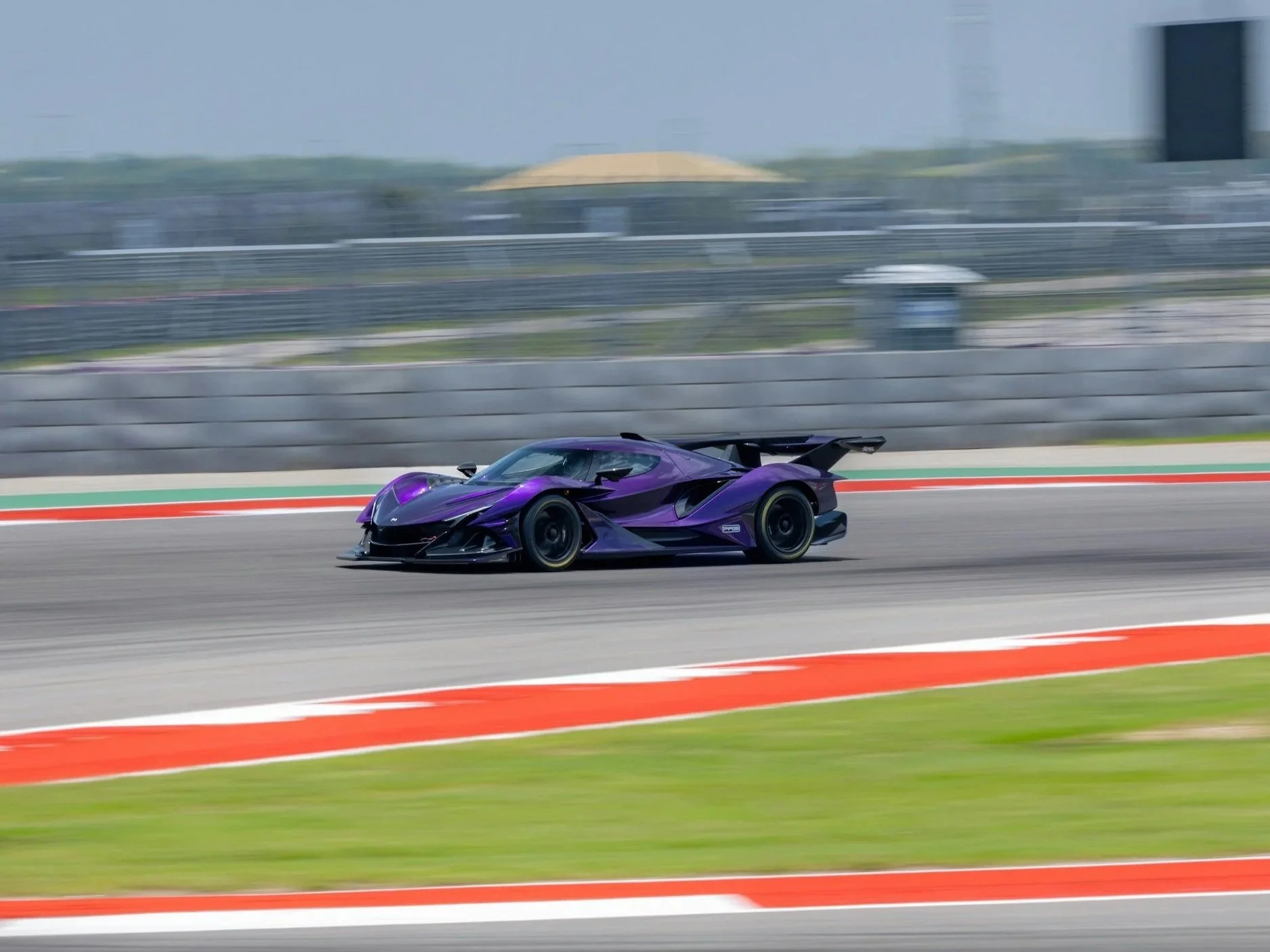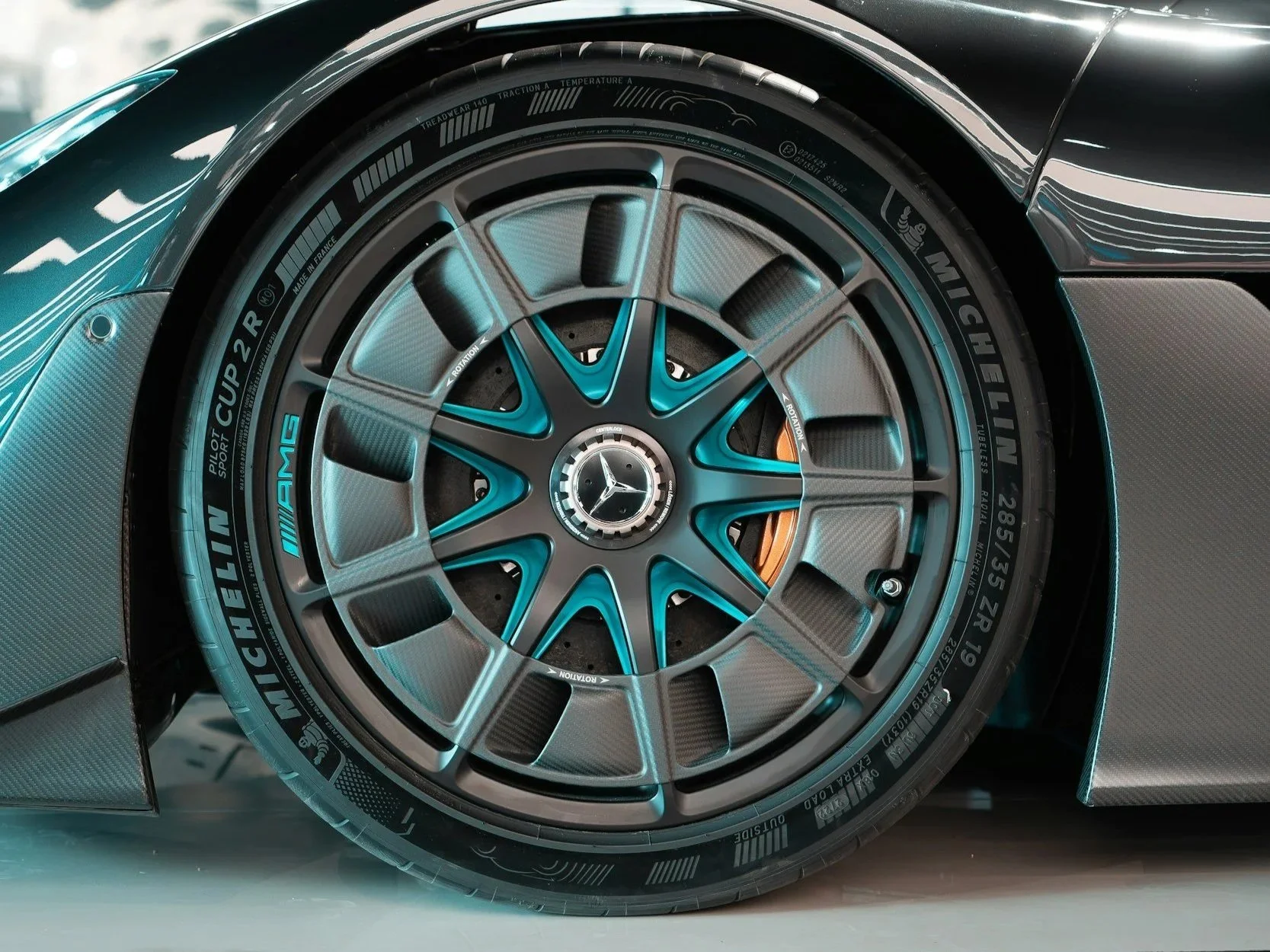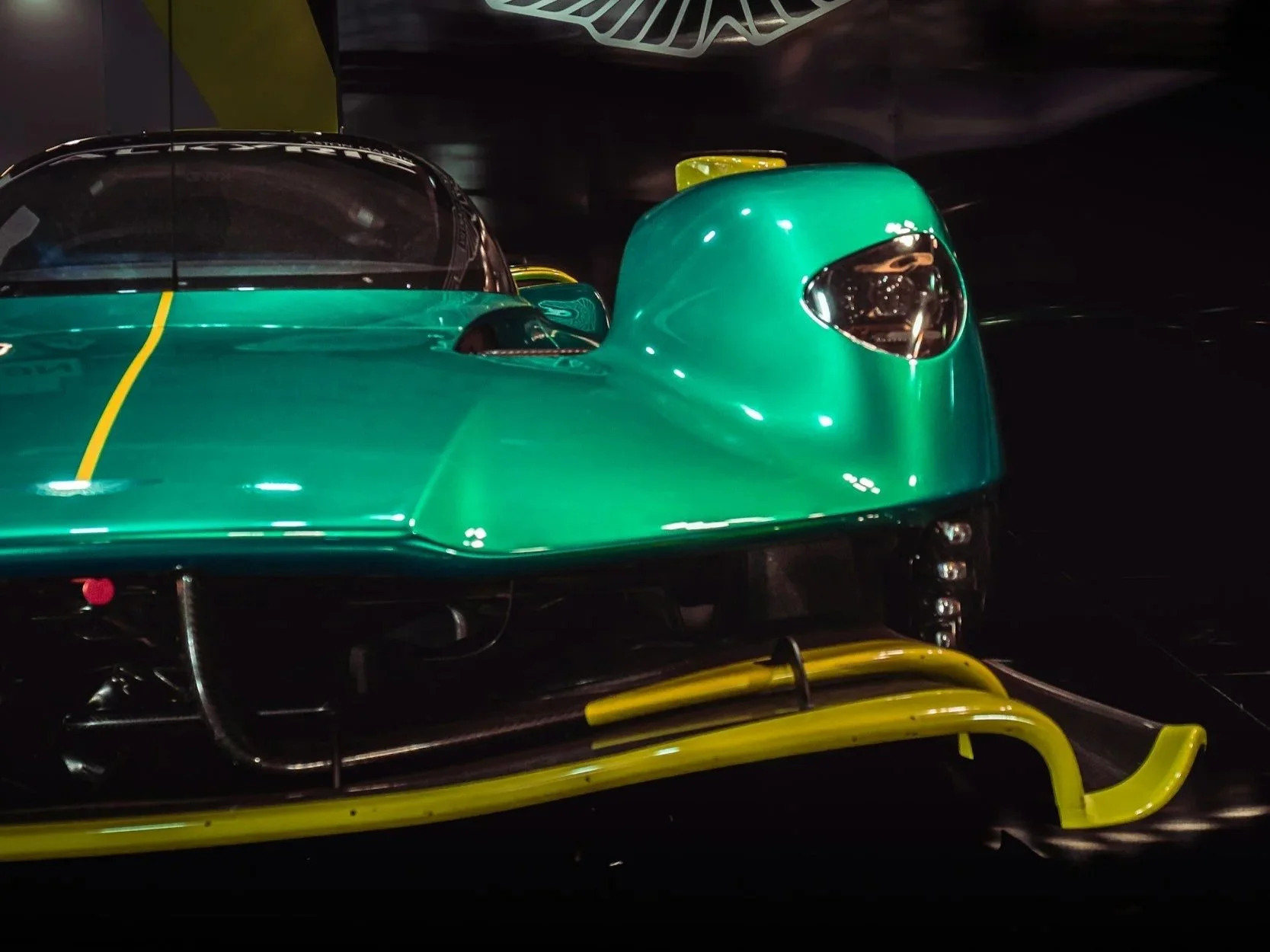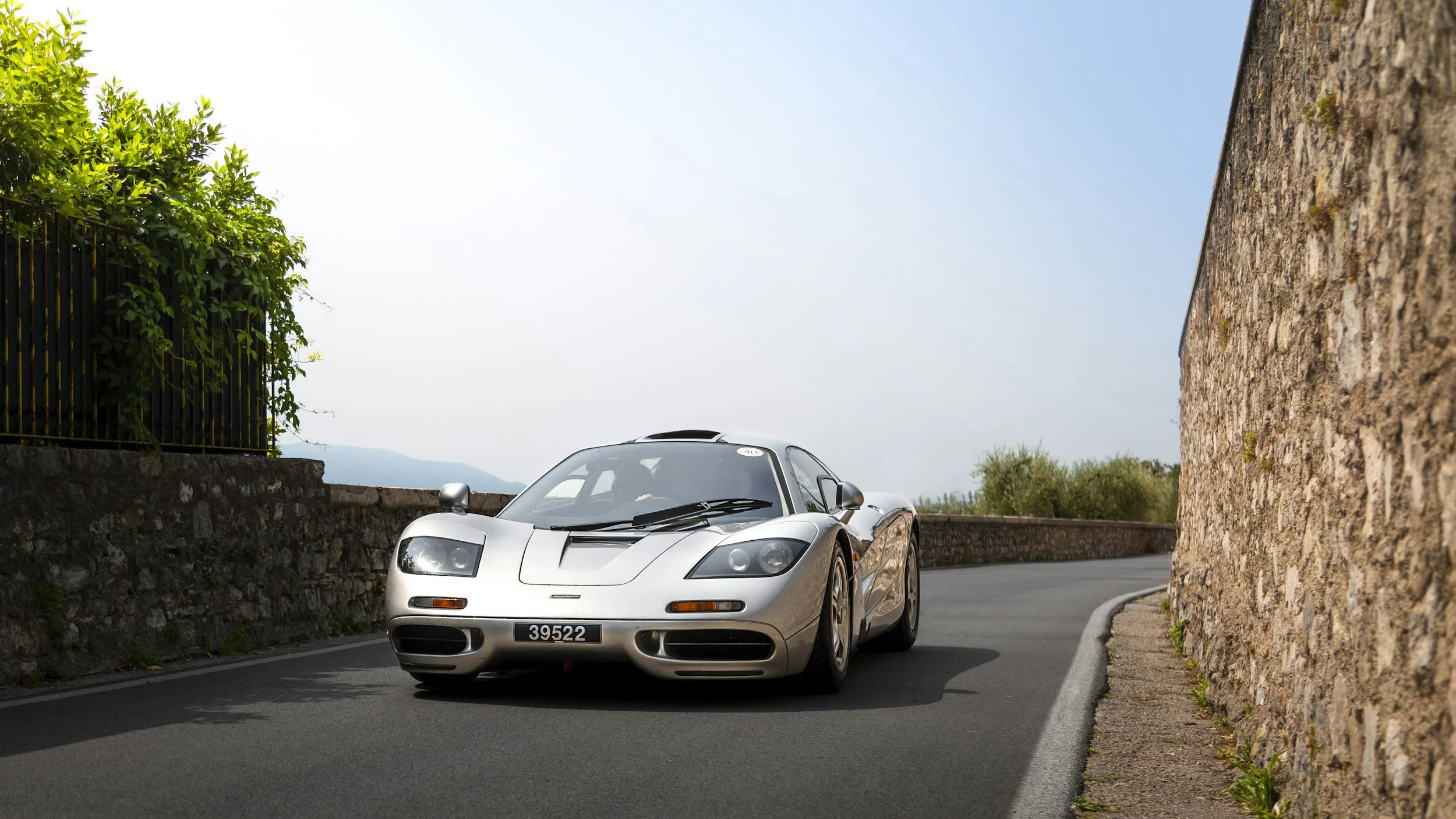From Track to Street – Hypercars Born on the Circuit
1. Introduction: The Racing DNA Behind Every Hypercar
Every great hypercar carries a pulse that beats to the rhythm of the racetrack. Long before they turn heads on city streets or cruise down the Riviera, these machines are born in the fiery laboratories of motorsport. The racetrack is where engineering limits are challenged, where failures turn into breakthroughs, and where the DNA of the world’s fastest road cars is forged. The philosophy is simple yet ruthless: if it survives the track, it deserves the street.
From the earliest days of endurance racing to today’s hybrid-powered prototypes, the connection between motorsport and hypercars has never been stronger. Racing provides a unique environment — one that demands innovation, precision, and durability under extreme conditions. Every tenth of a second saved on a lap can inspire a decade of technological evolution. Carbon fiber monocoques, adaptive aerodynamics, hybrid energy recovery systems, even the software that controls traction and torque vectoring — all of these technologies found their first breath on the track before shaping the hypercars we admire today.
Brands like Ferrari, McLaren, Mercedes-AMG, and Aston Martin have long understood that racing is not just about competition — it’s about research. Their hypercars are, in essence, condensed motorsport programs on wheels. The Ferrari SF90 Stradale, for example, draws heavily from Formula 1 hybrid systems, while the Mercedes-AMG One literally brings an F1 power unit to public roads. Meanwhile, Aston Martin’s Valkyrie translates Le Mans aero philosophy into an otherworldly road experience. Each one stands as proof that true innovation begins at the circuit.
But there’s also something deeper — something emotional. A hypercar born on the track doesn’t just perform differently; it feels different. Its steering is rawer, its chassis more communicative, its purpose more singular. It connects driver and machine in a way no grand tourer or electric luxury sedan ever could. It embodies purity — the unfiltered transfer of race-bred performance to public asphalt.
As the line between race car and road car continues to blur, the legacy of motorsport remains the heartbeat of the hypercar world. These machines remind us that even in an era of electrification and digital control, the soul of speed still belongs to the track.
2. The Evolution of Racing Technology to Road Use
The transfer of technology from racetrack to road has always been a driving force behind automotive progress. For hypercars, this process is not a side effect — it’s their very reason for existing. Every era of motorsport has left its fingerprints on road-going performance cars, shaping the engineering philosophy, design language, and even the emotional experience of driving them.
The story begins in the mid-20th century, when racing pioneers like Ferrari, Jaguar, and Mercedes-Benz blurred the line between track and street. The Ferrari 250 GTO, homologated for GT racing in the early 1960s, was essentially a race car that just happened to be road legal. Its lightweight chassis, aerodynamic bodywork, and high-revving V12 set a new standard for what a sports car could be. Similarly, the Jaguar D-Type, which dominated Le Mans, evolved into the road-going Jaguar XKSS, purchased by collectors and enthusiasts who wanted to own a piece of motorsport glory.
As racing evolved, so did the technology it inspired. The introduction of aerodynamic downforce in Formula 1 and endurance racing reshaped vehicle design throughout the 1970s and 1980s. Cars like the Porsche 959 and Ferrari F40 became the bridge between raw racing prototypes and everyday usability. Both models integrated advanced composite materials, turbocharging, and aerodynamic principles first tested on the track — ideas that defined the early DNA of modern hypercars.
By the 1990s, endurance racing gave birth to the GT1 era, one of the most direct crossovers between motorsport and street performance. Manufacturers like McLaren, Porsche, and Mercedes-Benz were required to build homologation road cars based on their race versions. The results were legendary: the McLaren F1 GTR, Porsche 911 GT1 Straßenversion, and Mercedes-Benz CLK GTR — all vehicles with pure racing hearts, adapted just enough to satisfy road regulations. Their existence proved that the boundary between competition and comfort could be razor thin.
Entering the 21st century, the fusion between race and road reached new levels of sophistication. Formula 1’s obsession with efficiency and hybrid energy recovery gave rise to the “holy trinity” of hypercars — the Porsche 918 Spyder, McLaren P1, and Ferrari LaFerrari. Each used lessons learned from hybrid race programs to create unprecedented power delivery, balance, and responsiveness. These models didn’t just copy motorsport technologies — they evolved them into something more refined and usable, yet still fundamentally track-inspired.
Today, this lineage continues with the Mercedes-AMG One, which integrates an actual Formula 1 engine into a road car, and the Aston Martin Valkyrie, whose extreme aerodynamics stem directly from Le Mans prototype design. Even as hypercars enter the era of electrification, from the Rimac Nevera to the McMurtry Spéirling, their development philosophies remain anchored in motorsport. Racing remains the crucible where innovation is tested — and only the strongest ideas survive to define the next generation of street-legal performance.
The evolution from circuit to street is, at its core, a story of obsession — a relentless pursuit of perfection that refuses to compromise. Every new hypercar carries the DNA of its racing ancestors, ensuring that the spirit of competition continues to shape the road ahead.
3. The Pioneers: When Motorsport Legends Went Road Legal
The bridge between racetrack and public road was first truly crossed in the 1990s, a golden era that gave birth to some of the most uncompromising and iconic machines ever built. These were not simply inspired by racing — they were racing cars in disguise, engineered to comply with the bare minimum of road regulations. For many enthusiasts, these so-called “homologation specials” represent the purest form of hypercar design: raw, loud, and unfiltered.
At the heart of this revolution stood the McLaren F1, introduced in 1992. Designed by Gordon Murray, who drew on his Formula 1 expertise, the F1 was conceived as the ultimate road car — but it quickly evolved into a racing legend. Its lightweight carbon fiber monocoque, gold-lined engine bay for thermal insulation, and a naturally aspirated BMW V12 engine made it a technological masterpiece. When McLaren later adapted it for endurance racing as the F1 GTR, it not only competed at Le Mans but won outright in 1995 — against purpose-built prototypes. The resulting F1 LM and F1 GTR Longtail variants blurred the line between race and road more than ever before, setting a precedent for all hypercars to follow.
Meanwhile, Porsche was crafting its own legend. The Porsche 911 GT1 Straßenversion, launched in 1997, was built to satisfy FIA homologation rules for GT1 competition. Underneath its 911-inspired silhouette lay a mid-mounted, twin-turbo flat-six engine derived directly from Porsche’s endurance racers. The car was effectively a Le Mans contender dressed in road-legal bodywork — a statement that Porsche’s racing pedigree could be experienced by a select few owners outside the track.
Not to be outdone, Mercedes-Benz entered the fray with the CLK GTR, a car so extreme it made even the GT1 look tame. Built by AMG’s racing division in just 25 units, it featured a 6.9-liter V12 producing over 600 horsepower and a carbon-fiber body that screamed “race car.” The CLK GTR was more than a collector’s trophy — it was a snapshot of an era when regulations forced manufacturers to build the fastest, most advanced road cars in history simply to compete in motorsport. Its sibling, the CLK GTR Roadster, remains one of the rarest open-top hypercars ever made.
These pioneers didn’t just push boundaries — they erased them. They demonstrated that a road car could deliver the same intensity, mechanical precision, and driver engagement as a professional race machine. They were brutally fast, unforgiving, and utterly impractical — and that was exactly the point.
Their influence is still felt today. Modern hypercars like the Aston Martin Valkyrie and Mercedes-AMG One owe their existence to the homologation heroes of the 1990s. Without them, the concept of a road-legal race car might never have evolved into the hypercar phenomenon we know today. The McLaren F1, Porsche 911 GT1, and Mercedes CLK GTR didn’t just define an era — they defined a philosophy: that the purest expression of speed is born on the track, but destined for the street.
Affiliate Disclosure
Disclosure: Some of the links on this website are affiliate links. This means that if you click on one of these links and make a purchase, we may earn a small commission at no extra cost to you.
We only recommend products and services that we trust or that are directly relevant to our content. Affiliate earnings help us keep this platform independent and of high quality.
4. Modern Icons: The New Breed of Track-Born Hypercars
If the 1990s defined the origin of track-derived hypercars, the 2020s have redefined their purpose. Today’s manufacturers no longer build road-legal race cars out of necessity — they do it to make a statement. These machines exist to demonstrate the ultimate fusion of motorsport technology, road compliance, and artistic expression. The result is a new generation of hypercars that challenge physics itself while honoring their competition-bred roots.
Among the most striking examples is the Mercedes-AMG One, a car that quite literally carries Formula 1 DNA. Its 1.6-liter turbocharged V6 hybrid engine is the same unit used in Mercedes’s F1 championship cars, adapted for street use with only minimal modifications. To make it reliable and compliant with global regulations, engineers spent years taming its 11,000 rpm redline, cooling systems, and complex hybrid control logic. The finished product is not just a road car — it’s a road-registered F1 car. Its performance figures are staggering, but its existence alone is proof that motorsport technology has reached a level of refinement once thought impossible beyond the circuit.
Then comes the Aston Martin Valkyrie, the brainchild of Adrian Newey — a name synonymous with Formula 1 aerodynamics. With its naturally aspirated 6.5-liter V12 co-developed by Cosworth and its extreme underbody airflow management, the Valkyrie feels less like a car and more like a prototype from Le Mans. Every curve of its body serves aerodynamic function; every gram is optimized. The Valkyrie AMR Pro, its track-only sibling, shows what happens when those boundaries are removed entirely — pure, unrestricted performance artistry.
Another important figure in this new era is Gordon Murray, returning decades after creating the McLaren F1 with his spiritual successor, the T.50. The T.50 revives the analog purity of driving while incorporating a racing-inspired fan system that actively manipulates downforce, reminiscent of Murray’s own Brabham BT46B “fan car.” It’s proof that modern hypercars can blend old-school racing philosophy with cutting-edge technology, creating a direct emotional bridge to the track.
Outside Europe, innovation continues at the same feverish pace. The Glickenhaus 004S, born from the endurance-racing 004C, brings Le Mans-style construction to U.S. roads, while the Pagani Huayra R and its legal counterpart, the Huayra Codalunga, maintain Pagani’s devotion to craftsmanship wrapped around uncompromised performance. Each of these projects exists to express engineering passion rather than corporate necessity — they are rolling laboratories where form and function meet at the outer limits of what’s mechanically possible.
What unites these modern icons is not just their technology but their philosophy. They prove that even in an era dominated by computer-controlled precision and hybrid powertrains, the spirit of motorsport remains alive in the road-car world. Every rev, every aerodynamic surface, and every vibration through the steering wheel tells a story written first on the circuit. The hypercars of today are more than machines — they are the living continuation of racing’s most ambitious dreams.
5. Engineering Challenges: Bringing Race-Tech to Public Roads
Translating racing technology into something street legal is far from straightforward. Every hypercar that originates from the track faces a daunting transformation process — one that demands not only technical ingenuity but also an understanding of legal, environmental, and practical realities. The goal is to preserve the purity of motorsport performance while making it usable, reliable, and compliant on public roads — a balancing act that tests the limits of modern engineering.
At the heart of these challenges lies the powertrain. Race engines are designed for short bursts of maximum output, often lasting just a few thousand kilometers before requiring a full rebuild. To adapt such engines for the road, engineers must reduce rev limits, modify lubrication systems, and reprogram hybrid energy recovery units to handle stop-and-go traffic. The Mercedes-AMG One is perhaps the most extreme example — its Formula 1 engine needed nearly five years of refinement before it could idle smoothly at 1,200 rpm instead of 5,000, pass emissions regulations, and start with a conventional ignition key instead of a pit-lane procedure.
Then comes aerodynamics. Track cars rely on aggressive downforce levels that can literally pin the vehicle to the asphalt at high speed. On public roads, however, those same forces can become dangerous or impractical, particularly when encountering speed bumps or uneven surfaces. Systems like active aero flaps, adjustable suspensions, and ride-height control are essential for taming that track-derived performance into something usable without losing its essence.
Another crucial adaptation is noise and emissions compliance. Racing exhausts are brutally loud and often unfiltered, while modern regulations demand silence and efficiency. Hypercars like the Aston Martin Valkyrie and Ferrari SF90 XX Stradale employ complex catalytic converters and hybrid-electric modes to meet environmental standards without sacrificing the raw emotion of performance.
Finally, there’s the human factor: making these cars drivable. Steering feedback, clutch calibration, and throttle response must be softened just enough for skilled drivers to manage them safely in daily conditions. Yet, the magic of these machines lies precisely in how close they remain to their racing roots.
In the end, every track-born hypercar is an engineering paradox — a masterpiece that exists in defiance of compromise. To make a race car street legal is to turn the impossible into reality, one system at a time.
6. The Emotional Core: Why Enthusiasts Crave Race-Born Machines
Beyond the engineering, beyond the numbers, there is something deeply emotional about a hypercar born on the circuit. These cars evoke feelings that transcend performance metrics — a blend of admiration, nostalgia, and pure adrenaline. For many enthusiasts, driving a machine that carries the DNA of motorsport is like holding a piece of living history, one that connects man and machine in its most visceral form.
What makes these cars so intoxicating is their authenticity. They don’t just look fast — they are fast, and not in a detached or synthetic way. Every vibration through the steering wheel, every metallic click of the gearbox, and every whine from the turbochargers or electric motors reminds the driver of its racing origins. These sensations are unfiltered, mechanical truths — experiences that have become increasingly rare in an era dominated by digital refinement and autonomous aids.
There’s also a psychological element to it. Owning or even driving a track-born hypercar fulfills a primal desire for control and mastery. These vehicles demand skill, focus, and respect. The driver becomes part of the car’s rhythm — interpreting its signals, anticipating its limits, and feeling every ounce of its mechanical tension. It’s an experience closer to piloting a fighter jet than to driving a luxury car.
But the emotional pull goes even deeper: heritage and legacy. When you start a McLaren F1, a Valkyrie, or a Ferrari FXX, you’re not just igniting an engine — you’re awakening decades of racing triumphs and human ambition. These cars embody the essence of motorsport’s greatest stories, from Le Mans victories to Formula 1 glory. They carry the fingerprints of engineers, drivers, and dreamers who refused to accept the ordinary.
Even spectators feel this connection. Watching a hypercar glide through city streets or roar down a mountain pass is like witnessing a fragment of the racetrack break free from its barriers — an outlaw of performance that defies the limits of normality.
In a world where technology often distances us from emotion, track-born hypercars do the opposite: they reconnect us with the raw, untamed essence of driving. They remind us that speed is not just a number — it’s a feeling.
7. Limited Numbers, Unlimited Legacy: The Collectors’ Perspective
For collectors, track-born hypercars represent far more than speed — they are rolling investments, historical artifacts, and symbols of engineering purity. Unlike mass-produced performance cars, these machines exist in extremely limited numbers, often fewer than 100 units worldwide. That scarcity, combined with their direct link to motorsport, creates a level of desirability few other automotive segments can match.
The McLaren F1, once sold for under a million dollars in the 1990s, has today become one of the most valuable cars on earth, with pristine examples fetching over $20 million at auction. The Porsche 911 GT1 and Mercedes-Benz CLK GTR, once misunderstood for their brutal, impractical nature, now command similar reverence among elite collectors. What was once considered excessive has become irreplaceable — proof that authenticity and rarity never lose their allure.
Collectors are drawn to these cars not only for their financial potential but also for their heritage. Each model carries a unique narrative — a chapter in the continuing story of motorsport. A McLaren F1 GTR isn’t just a car; it’s a Le Mans winner. A Mercedes CLK GTR isn’t just a hypercar; it’s the distilled essence of an entire GT1 racing era. These stories add intangible value that no modern production number or horsepower figure can replicate.
Another factor driving their appeal is craftsmanship. Track-derived hypercars are often hand-built to uncompromising standards, using exotic materials and processes borrowed from aerospace technology. Many collectors view them as kinetic sculptures — objects of art that just happen to move at 350 km/h.
Beyond their beauty and rarity lies the promise of legacy. Ownership of such a machine places one in an exclusive lineage of individuals who share a passion for preserving automotive history. Collectors often see themselves not merely as owners, but as custodians — keeping alive the link between past and future generations of innovation.
In a rapidly changing automotive world, where electrification and digitalization dominate, these cars serve as time capsules of unfiltered performance. They remind us of an era when engines screamed, tires smoked, and technology was born not in software labs, but on the unforgiving surface of the racetrack.
8. Conclusion: The Blurred Line Between Circuit and Street
The line between track and street has never been thinner — and never more fascinating. What began as a necessity for racing homologation has evolved into an art form: the transformation of pure motorsport DNA into something that can be legally driven through city streets. Today’s hypercars are not merely inspired by racing; they are racing, distilled into a tangible experience that transcends boundaries of technology, emotion, and design.
Each new generation pushes this connection further. The Mercedes-AMG One carries a Formula 1 heart, while the Aston Martin Valkyrie channels endurance racing aerodynamics. Even fully electric hypercars like the Rimac Nevera and the radical McMurtry Spéirling draw from motorsport principles — instant torque, energy management, and aerodynamic efficiency. The racetrack remains the ultimate laboratory, and its discoveries continue to shape the road cars of tomorrow.
But beyond the engineering lies something timeless: the spirit of competition. Hypercars born on the circuit symbolize human ambition — the relentless drive to go faster, to innovate, to redefine the possible. Whether powered by combustion, hybrid systems, or pure electricity, these machines embody the same purpose that fueled the pioneers of Le Mans and Formula 1 decades ago: to chase perfection, no matter the cost.
As regulations tighten and technology evolves, the question remains: will future hypercars still carry the same soul? The answer lies not in horsepower, but in intent. As long as carmakers continue to view the racetrack as a proving ground and not a marketing stage, the tradition will endure. The materials and power sources may change, but the essence — the symbiosis of man, machine, and motion — will remain untouchable.
The modern hypercar stands as the ultimate paradox: a machine born for competition yet constrained by legality, a sculpture of speed that exists at the crossroads of art and engineering. From track to street, its journey mirrors humanity’s own — a testament to creativity, courage, and the endless pursuit of excellence.








